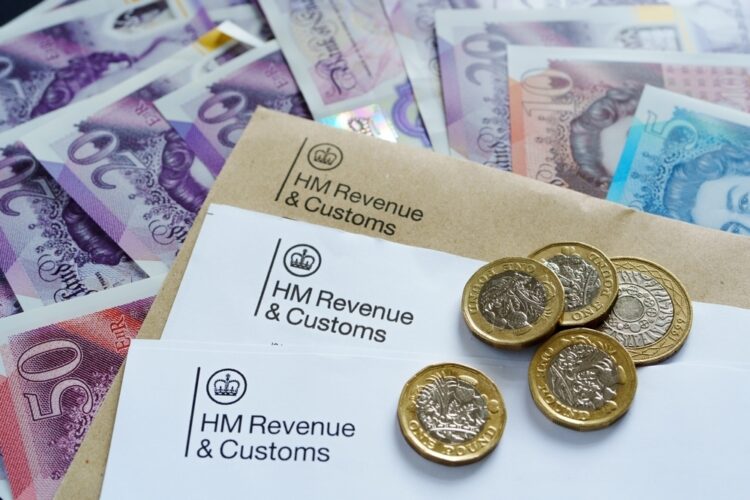The first week of April sees some large price rises where there are government-managed or influenced bills. The tax rises set out in the autumn budget last year by Chancellor Rachel Reeves will also come into effect.
The energy price is going up by 6.4% on top of the 1.2% rise in January. The average water bill will increase by 26%, with Southern Water proposing the highest company rise at 47%. Rail fares have gone up by 4.6%.
Council Tax will go up for most councils by 5%, but Bradford at 10%, Windsor and Maidenhead and Newham at 9% will lead the pack of those councils with government permission to go higher.
National Insurance (NI) contributions go up from 13.8% to 15% for employers, an 8.7% rise. The starting point for employers paying NI is reduced to an income of just £5,000, down from £9,100, dragging a lot more low-paid employees into the net. There is some offset for small employers through an increase in the Employment Allowance.
Car tax goes up and is being introduced on electric vehicles for the first time. The TV licence also rises by 2.9%.
The impact on inflation
Most agree that inflation will rise this year from the 2.8% level last month. The Bank of England expects it to reach a peak of 3.7% in the next few months. The Office for Budget Responsibility (OBR) says it will average 3.2% this year, compared to the 2% targeted by the Bank of England. It had to revise this forecast upward from the budget estimate, which was itself an increase in the forecast rate.
The Bank of England is caught in a difficult position, wanting to cut rates because there is no growth in the economy, but fearing higher inflation could embed if they ease too much. The poor performance on inflation will reduce the speed of rate reduction, leaving pressure on longer-term bond and mortgage rates. Ten and twenty-year interest rates remain above the levels of autumn 2022 and are a concern to the authorities. The government’s wish to make a large increase in the rate of housebuilding is partly restricted by mortgage costs.
The impact on jobs and output
Both the OBR and the Bank of England have cut their forecasts of gross domestic product (GDP) growth this, year to 1% and to 0.75%. Business confidence declined in the second half of last year in anticipation of the tax rises. Vacancies have been falling for the past year as employers worry about staffing budgets at the new higher levels of tax and wages against a less certain background for sales.
Areas of work such as retail, entertainment and hospitality are particularly vulnerable to the increases in labour costs. Some parts of the hotel and restaurant sector and of the entertainment sector will be able to out up prices, but other parts such as retail remains very competitive with limited opportunity to recoup the increased costs. This will serve to lower new job creation and investment.
The Bank of England and the OBR assume rising unemployment in their forecasts. The central bank thinks the current 4.4% rate will rise to 4.8% by 2027, whilst the OBR expects 4.5% this year. Wages are currently rising faster than prices which provides some overall stimulus to growth.
The fact that the price of essentials such as water and energy are rising so much faster than inflation, and that council tax and other taxes are also busting inflation is having some negative impact on consumer sentiment. Some families cannot find enough money in their budgets to make as many discretionary purchases as before.
Spending pressures on the government
The government has needed to give public bodies and public services extra grants for the increases in National Insurance, as many services are labour intensive. The government is currently negotiating with the UK steel industry over the closure of British Steel’s plant in Scunthorpe, where large sums are being offered as subsidies. Some wish to keep the facility open for longer despite the very high energy and energy tax costs the business is incurring. Some want to help fund a replacement electric arc furnace works.
Pharmacies have just been offered some extra money to help with their additional costs. Private-sector care homes also face difficulties, which may result in higher bills for state-supported residents.
The public sector often claims it experiences a higher rate of inflation than the Consumer Price Index measure, given its high labour content. None of this makes it easy for the Chancellor to stay within her fiscal rules and spending limits. The government is still engaged in difficult talks about individual programme and departmental budgets prior to the announcements of the Spending Review on 11 June.
A challenging outlook
Inflationary pressures mean higher interest rates for longer. They will also increase the tightness of the public finances. The spending review will be difficult, with bad news likely in the run up to the announcement. The long run up to the next budget in the late autumn is likely to be marked by speculation of possible further tax rises to ease the spending squeeze.
Markets are aware of the current pressures on inflation and expect it to be coming back down again by year end. This is the most likely outcome. Any signs of the higher rate leading to expectations of higher levels of inflation setting in, or of the wage round bidding up wages by more to allow for it, would be taken badly.
Output is suffering from the impact of higher costs on business, as companies scale back investment and growth plans and decide they can afford fewer employees.
Nothing on this website should be construed as personal advice based on your circumstances. No news or research item is a personal recommendation to deal.
Taxes and utility bills are going up
Read this next
How damaging are the Trump tariffs?
See more Insights